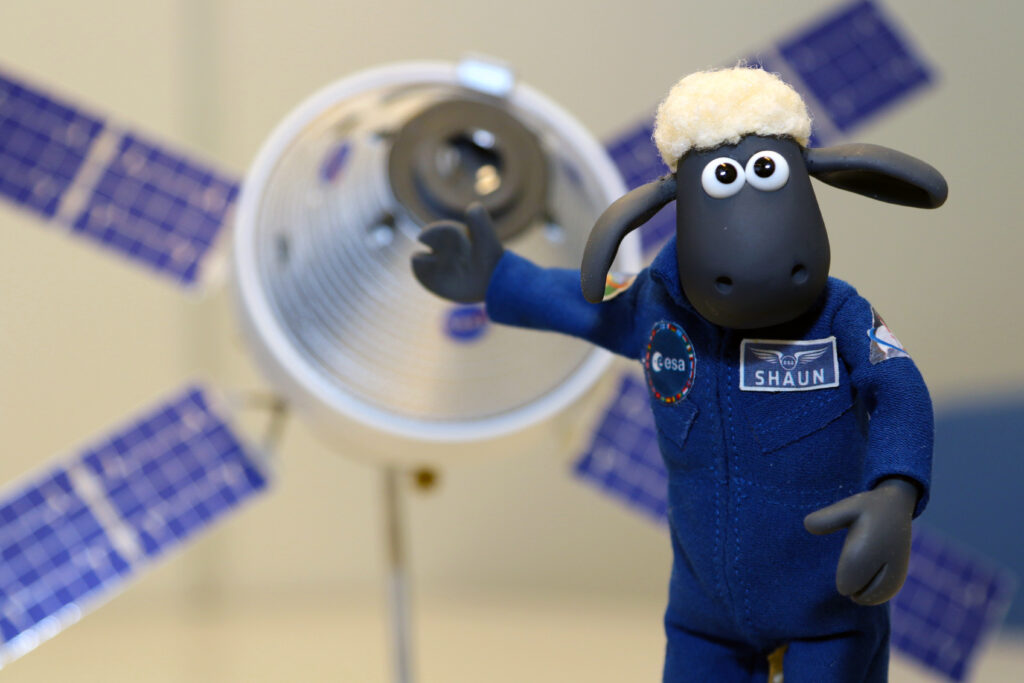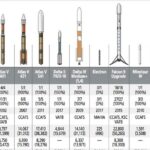Orbital Payload Launch
U.S. Payload Launches
Rocket Lab launches NASA solar sail test, South Korean observation satellite


Rocket Lab launched two satellites on April 24. One is an Earth observation satellites for a Korea university and the other is a solar sail technology demonstration.
Second Starship test flies higher before failure


With 33 Raptor engines belching flame, SpaceX’s Starship demonstrated the full power of its main booster, reaching an altitude of 91 miles before the second uncrewed attempt to launch the massive rocket from Boca Chica, Texas, ended when the second stage apparently failed.
ESA Sending Heroic, Fictional Sheep Aboard Artemis I


NASA says its Artemis I flight set to launch as soon as late August will be an uncrewed lunar fly-by. The Paris-based European Space Agency would beg to differ. Shaun is leaving the happy confines of Mossy Bottom Farm to lead the flight around the Moon, an agency press release announced.
2017 – U.S. Payload Launch – Snapshot


The U.S. share of global orbital launch activities continued to grow, from 26% in 2016 to 33% in 2017. In 2017, the nation’s launch service providers. . .
2016 – U.S. Payload Launch – Snapshot
U.S. launch activities constituted ##% of global orbital launch activity, matched only by China during 2016. The country’s ## successful launches for 2016 exceeded its 2015 efforts by ##.
2015 – U.S. Launch, Payload
U.S. launch activities took slightly more than 23% of the global orbital launch market in 2015, helping the country remain behind only Russia for launch attempts in the world. Of the 20 SLVs launched from within the United States in 2015, 18 successfully reached orbit. Two launch failures, one SpaceX SLV and one experimental military SLV, affected the U.S. SLV launch rate in 2015, preventing it from reaching the previous year’s total of 23 attempted launches. Launch failures accounted for 10% of attempted U.S. launches in 2015, though a fairer industry comparison of slightly more than 5% could be assumed by subtracting the failure of the experimental launch vehicle. The 2014 launch failure rate for U.S. SLVs was slightly above 4%.
2014 – U.S. Launch, Payload
The United States attempted to launch ## rockets in 2014, all but ## of which were successful. United Launch Alliance (ULA) provided the majority of U.S. orbital launches in 2014. ULA launches deployed payloads for the military and civil government. The U.S. Air Force (USAF) awarded ULA three contracts in 2013, in which ULA would provide ## launch vehicle booster cores from 2013 through 2017.
2013 – U.S. Launch, Payload
The United States had a relatively busy year in 2013, with a total of ## orbital launches, all of which successfully placed their payloads into orbit. This was consistent with the U.S. average annual rate of ## to ## launches per year over the past decade. The United States was the world’s second-most prolific launch country in 2013, a place it has historically occupied behind Russia, but one that it lost to China in 2011 and 2012. A slower Chinese launch tempo, combined with the ramping up of ISS resupply flights by the Falcon 9 and Antares rockets, were the main drivers behind the decrease in Chinese launch rates and increase in U.S. launch rates.
2012 – U.S. Launch, Payload
The United States made ## orbital launch attempts in 2012, all of which were successful. This total placed it third, behind Russia and China for the number of orbital launches performed in 2012. Among the 2012 U.S. launches were several noteworthy missions. The year saw the successful commercial debut of the SpaceX Dragon cargo spacecraft, the first privately developed spacecraft to berth with the ISS.
2011 – U.S. Launch, Payload Snapshot
The United States continued to operate the world’s most diverse fleet of orbital launch vehicles in 2011. While its total of ## successful launches was not the world’s highest, it led in terms of diversity, with ## different types of orbital rockets launched throughout the year. In addition, 2011 saw progress toward the introduction of a new rocket system, the Antares (known prior to December 2011 as the Taurus II) and the announcement of three new launch systems, the Falcon Heavy, the Space Launch System, and the as-yet unnamed vehicle under development by Stratolaunch Systems.